Christmas Island travel: come face-to-face with 120 million robber crabs
An encounter with 120 million of these is one of many gobsmacking wildlife experiences you can expect on Christmas Island, dubbed Australia’s ‘Jurassic wonderland’ for brave tourists.
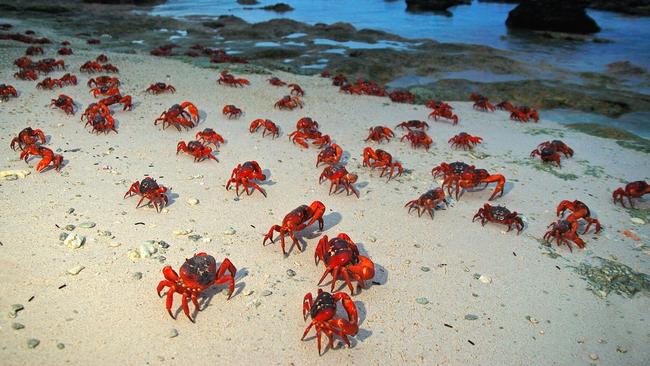
With only my phone torch for lighting, I’m almost at my front door when my heart skips a beat. Centimetres from my toe is the largest set of claws I’ve seen. Once my pulse has returned to normal, I admire the intricate patterns of the blue and orange robber crab.
Waving two sets of antennae, this mighty crustacean is bigger than a football but is harmless.
The encounter is the first of many gobsmacking wildlife experiences I’ll have on Christmas Island.
This external territory of Australia is a jagged, jungle-topped outcrop 2600km northwest of Perth. It’s an astonishing ecosystem where land crabs patrol the forests and seabirds have no fear.
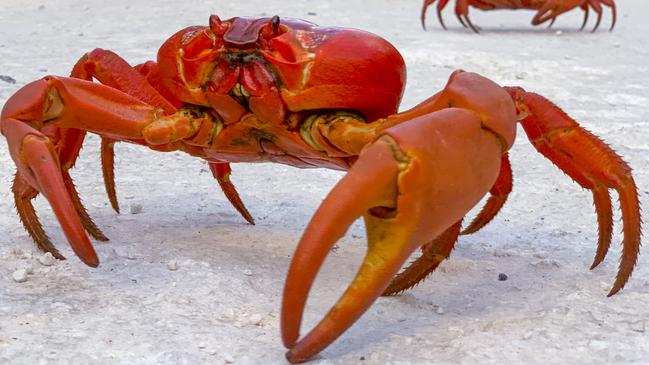
I’m travelling with Indian Ocean Experiences, which runs a multi-day Christmas Island package in conjunction with tourism collective Australian Wildlife Journeys.
Owner Lisa Preston tailors the accommodation and activities for guests, offering a mix of excursions and activities with her company and others. I’ve checked in to Villa Papaya, a one-bedroom 1950s miner’s cottage in the island’s main village, imaginatively named Settlement.
The house has been turned into a tropical garden paradise, its living areas open to cooling breezes and visits from inquisitive birds.
First item on the agenda is an orientation tour. “Welcome to our Jurassic wonderland,” says guide Chris Carr.
Not by accident, his colourful shirt depicts a medley of fierce dinosaurs. Technically, the island is the tip of an extinct volcano, about 60 million years old, so it’s much younger than the Jurassic period, but it definitely has a weird-wildlife vibe, with many species found nowhere else.
The most famous of the quirky critters is the red crab; up to 120 million of these colourful crustaceans live here in forest burrows. In migration season, they swarm to the shoreline before releasing tiny larvae into the ocean. Those that don’t get munched by fish and whale sharks return as fully formed crabs a month later.
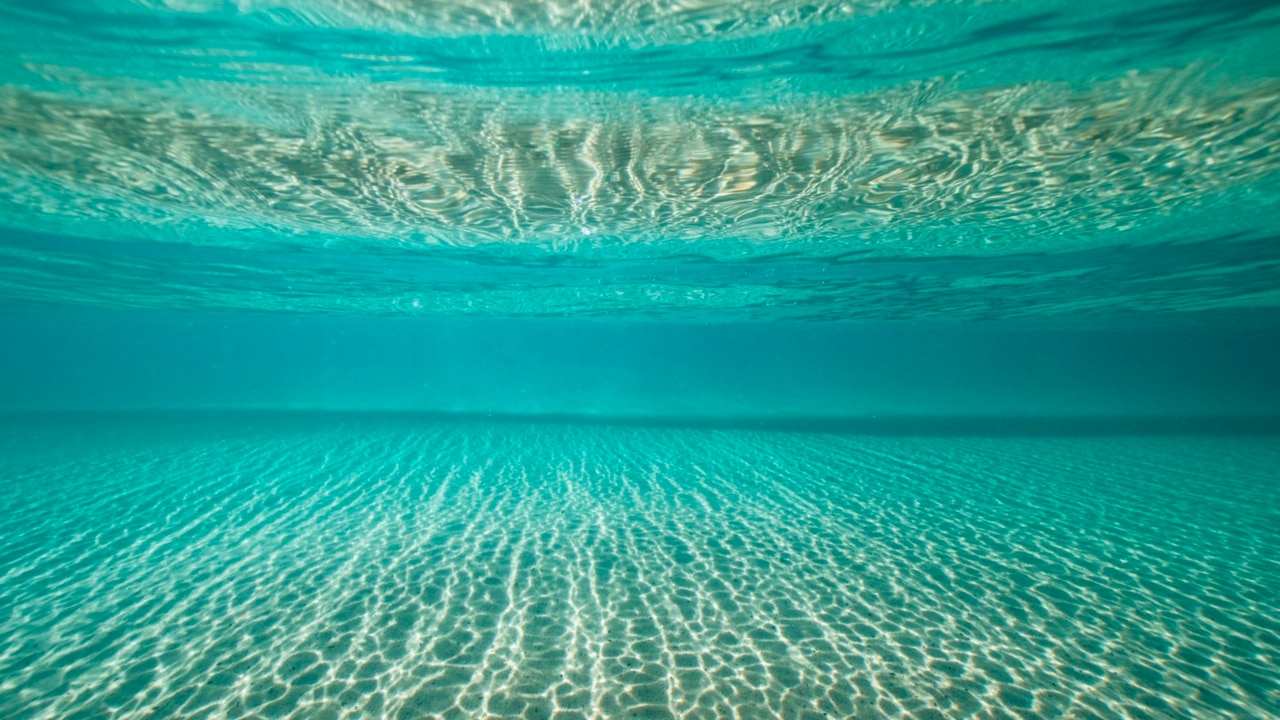
Chris explains that phosphate mining started in the late 1800s and continues today. Historically, workers were imported from Malaysia, China and India and the community of 1300 residents retains strong links to Asia. For many mainland Australians, the island is infamous as a target destination for people smugglers, and its residents have witnessed heartbreaking tragedies from the shore.
Visitors, however, will hardly be aware that an Australian government detention centre still houses about 40 people.
About 5km from that facility, a series of blowholes propel sea water skywards to rain droplets on our heads.
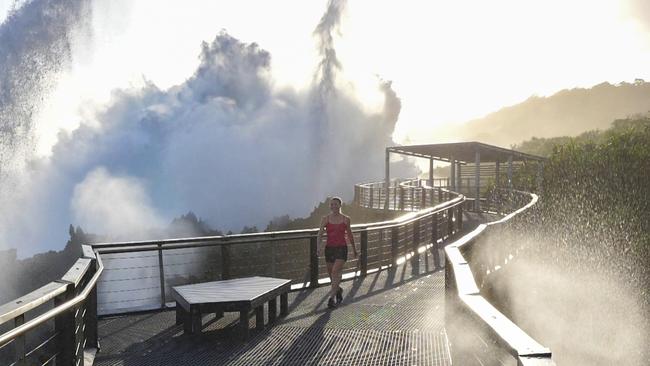
From there, guide Lisa leads me to Dolly Beach, where sunlight slants through verdant palms.
Making coffee on the sand, Lisa draws the attention of eight robber crabs, which advance on her in slow motion. She is remarkably calm as one inquisitive crab gives her a prod and attempts to steal the coffee container.
There are cultural revelations, too. Back in Settlement at lunchtime, I poke my head into the Chinese Literary Association Cafe, where kitchen aromas transport me to a Singapore hawker market. I take a seat on the ocean-view deck and slurp seafood hor fun noodles.
Another day I’m in the traditional Malay quarter, called Kampong, grabbing breakfast from a food truck. The Muslim call to prayer echoes across the precinct as I tear my flaky roti, dunking it into punchy curry sauce.
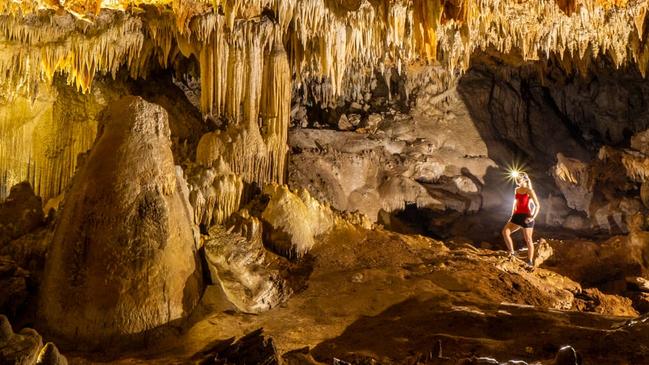
Out in Flying Fish Cove, a few tourists are snorkelling the narrow coral reef. Just beyond it, the ocean floor drops away to a depth of 4.5km.
Deep water is irresistible to David Mulheron, an Australian freediving champion and owner of Freedive Christmas Island.
He can plunge to 102m and resurface on a single breath, but I’m joining him for something much more achievable, a motorised sea scooter tour.
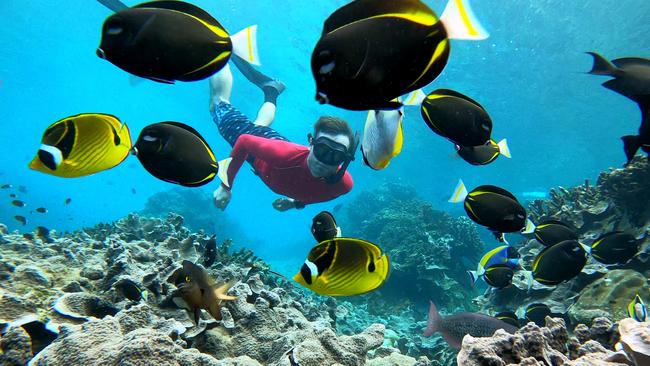
After basic instructions, I’m chugging along beside him, diving with an octopus, schooling with surgeonfish, and patrolling with a white-tip reef shark. The action continues on an e-mountain bike tour along jungle trails, dodging puddles, red crabs and orb spiders while admiring sprawling limbs of strangler figs.
Apart from 10-legged critters, Christmas Island’s other obvious inhabitants are 80,000 nesting seabirds.

Having donned a shirt with an ornithological design, Chris is back on the beat, pointing out red-tailed tropic birds on their nests and red-footed boobies collecting twigs.
At Golf Course Lookout, an elegant golden bosun glides past at eye level.
Chris has access to a private dam where three species of frigatebirds are swooping in like pterodactyls, the 2½-metre span of their wings whooshing overhead before they scoop up a drink in their beaks.
Sixty-three per cent of the island is designated national park, and my final three nights are spent fully immersed in its wonders at spectacular Swell Lodge, where two canvas double chalets are perched on the island’s northwest coast.
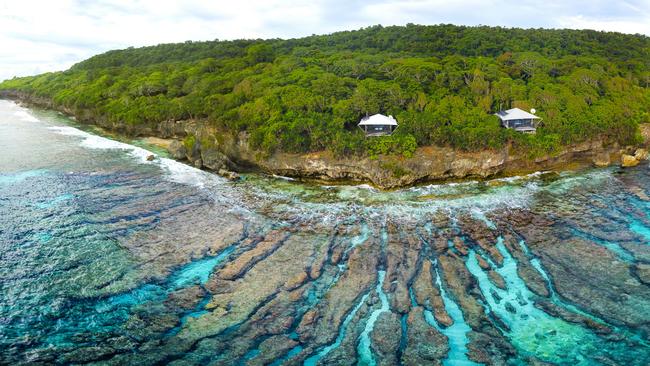
Opening the door, I catch my breath. A wall of sliding glass doors faces the ocean, leading to a veranda that almost overhangs the cliff.
It’s a front-row seat for a wildlife bonanza. A brown booby eyes me curiously as it soars past. In the rock pools below, foamy waves wash over worlds of coral.
With my binoculars, I can identify red parrotfish and white-spotted surgeonfish; it’s like snorkelling without getting wet.
The lodge treads lightly, and was assembled by hand on raised platforms.
The solar-powered pavilions feature odour-free composting toilets but also deliver on the luxury front, with coffee machines, king beds and gratis minibar.
There is no reception or restaurant on site, but when night falls, chef John appears at my door, whipping up a three-course extravaganza of local wahoo sashimi, lamb rack with edamame, and pineapple upside-down cake.
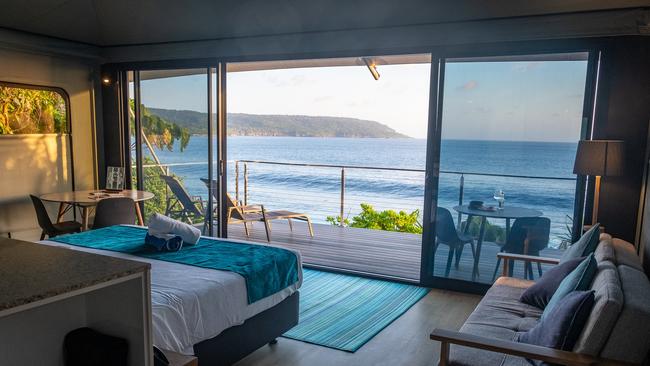
Swell Lodge offers tours, and with the guests from the second chalet, I visit a rehabilitation centre for critically endangered Abbott’s boobies, and a National Parks breeding program for the rare blue-tailed skink and Lister’s gecko.
I’m guided through the Dales, a protected wetland, where waterfalls nurture giant Tahitian chestnut trees and colonies of blue crab. Clambering down a gorge and under strangler figs, I’m soon peering through a canyon to the ocean.
Before leaving, I swim in the Grotto, a limestone cave where the water glows an ethereal aqua. We’ve entered via the forest, but tunnels connect it to the ocean, and the swell shunts air into the cave. Chinese legend has it a dragon is trapped here.
And as each wave surges in, I hear the dragon’s roar, its salty breath on my face.
In The Know
Australian Wildlife Journey, in conjunction with Indian Ocean Experiences, offers the eight-day Christmas Island Ultimate Wildlife package from $2450 a person, twin-share, with return flights ex-Perth. Includes accommodation at The Sunset and various tours plus seven days’ 4WD car hire. Additional costs apply for upgrades to Villa Papaya, Swell Lodge, sea scooter tour and e-mountain bike tour.
Indian Ocean Expereinces is a member company of Australian Wildlife Journey, a collective of ethical, high-quality, guided wildlife tourism experiences across Australia.
The red crab migration occurs in the wet season from November to early January. Crabs can be seen in all seasons; May to November is considered the dry season.
Carolyn Beasley was a guest of Australian Wildlife Journeys, Indian Ocean Experiences, Christmas Island Tourism Association and Swell Lodge.



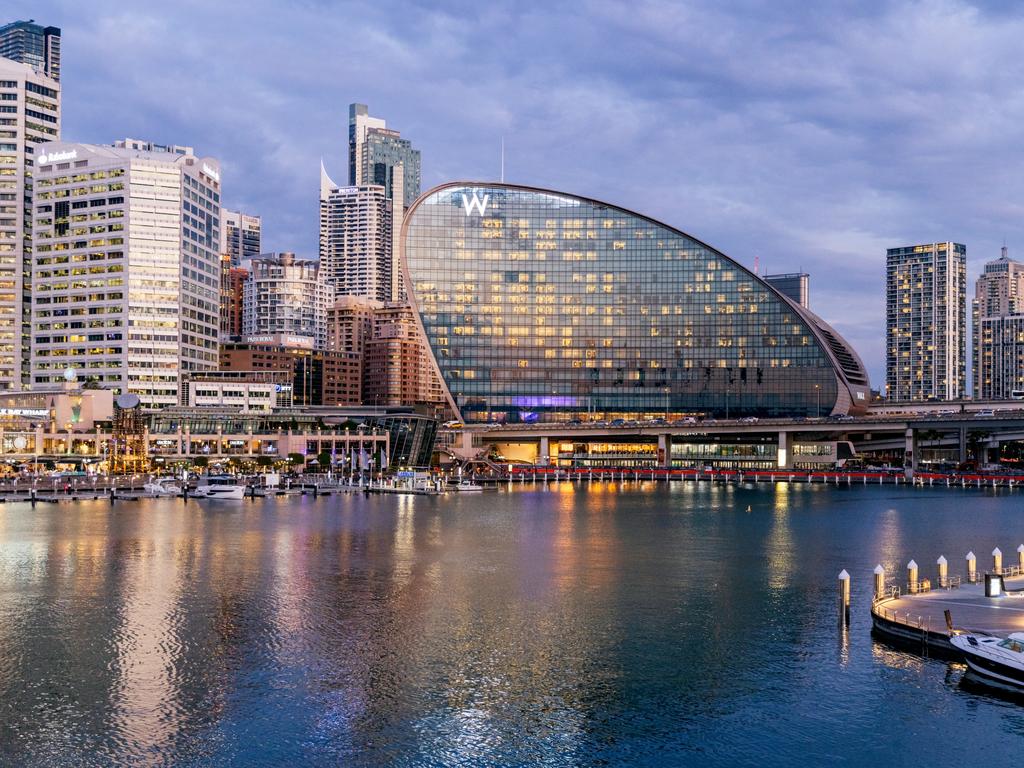
To join the conversation, please log in. Don't have an account? Register
Join the conversation, you are commenting as Logout